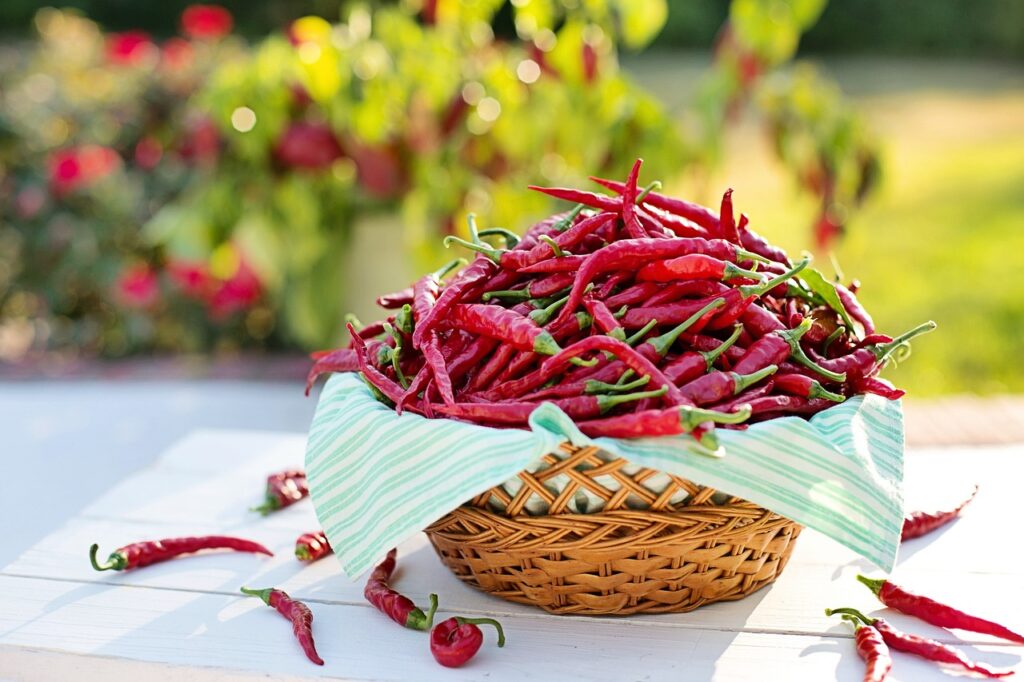Cayenne Pepper (Capsicum annuum), known for its fiery heat and vibrant red color, is a popular choice for spice lovers and home gardeners. Here’s a detailed guide on how to grow and care for cayenne pepper plants to enhance your garden’s productivity and flavor.

Types of Cayenne Pepper
Cayenne pepper plants come in various varieties, each offering unique characteristics and levels of heat. Here are some popular types:
| Type of Cayenne Pepper | Characteristics |
|---|---|
| Long Red Cayenne | Traditional variety known for its long, slender, and extremely hot peppers. |
| Cayenne Purple | Unique variety with dark purple peppers that turn red when fully ripe. |
| Carolina Cayenne | Hybrid variety known for its larger peppers and even spicier flavor. |
Growing Season
Cayenne pepper plants have a specific growing season that ensures they thrive and develop lush foliage and abundant peppers. Here’s a seasonal guide:
| Season | Activity |
|---|---|
| Spring | Sow seeds indoors 8-10 weeks before the last frost, transplant seedlings, start regular watering. |
| Summer | Continue watering, provide full sun, apply mulch to retain moisture, monitor for pests. |
| Fall | Harvest mature peppers, reduce watering, prepare plants for cooler temperatures. |
| Winter | Minimal maintenance, can grow indoors or in a greenhouse. |
Sunlight and Water Needs
Cayenne pepper plants thrive in full sun and need consistent moisture to grow healthily.
- Sunlight: Full sun.
- Watering: Keep soil consistently moist but well-drained. Water when the top inch of soil feels dry.
Soil Preferences
Cayenne pepper plants prefer well-drained, nutrient-rich soil to promote healthy growth.
| Soil Type | pH Level | Characteristics |
|---|---|---|
| Loamy soil | 6.0-6.8 | Well-draining, rich in organic matter. |
| Sandy loam | 6.0-6.8 | Balanced drainage and moisture retention. |
Fertilization and Nutrients
Cayenne pepper plants benefit from regular feeding during the growing season to encourage vibrant growth and abundant peppers.
| Season | Fertilization Type |
|---|---|
| Spring | Balanced slow-release fertilizer when transplanting seedlings. |
| Summer | Fertilize every 4-6 weeks with a balanced liquid fertilizer. |
| Fall | Stop fertilizing to prepare for cooler weather. |
| Winter | No fertilization needed. |
Pruning and Maintenance
Regular maintenance helps keep cayenne pepper plants healthy and productive. Prune as needed to remove dead or damaged leaves and to shape the plant.
Additional Tips for Growing Cayenne Pepper
- Container Choice: Use large pots with drainage holes for container-grown cayenne pepper plants.
- Humidity: Maintain moderate humidity; ensure good air circulation to prevent fungal diseases.
- Pest Control: Watch out for pests like aphids, spider mites, and whiteflies. Use appropriate insecticidal soap if necessary.
- Support: Stake plants if needed to support the weight of the peppers and prevent branches from breaking.
Conclusion
Cayenne pepper plants are a versatile and rewarding addition to any garden, offering spicy peppers and vibrant foliage with minimal care. By choosing the right type of cayenne pepper and providing proper sunlight, water, and soil conditions, you can enjoy a bountiful harvest of these fiery fruits.